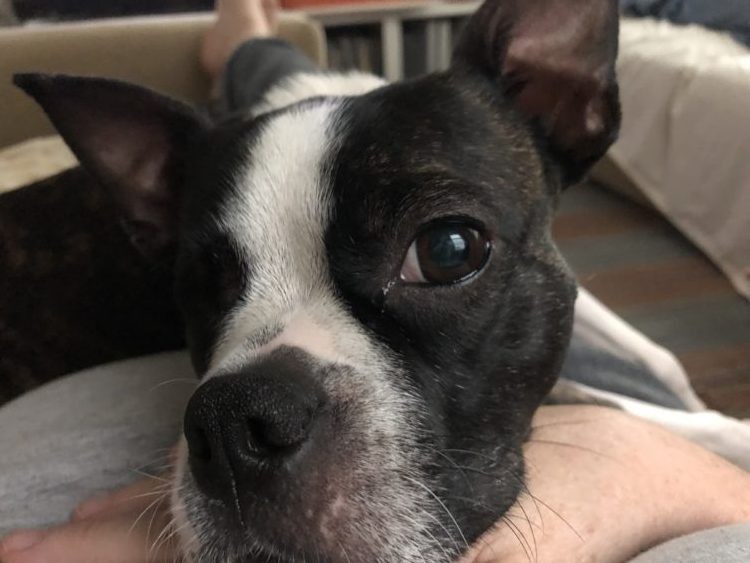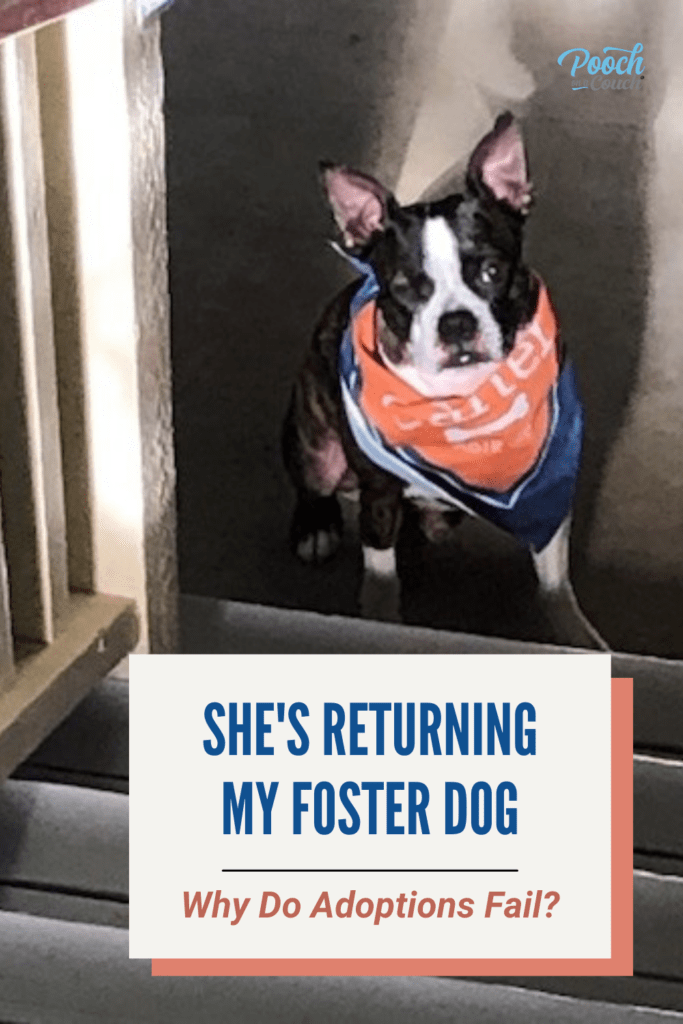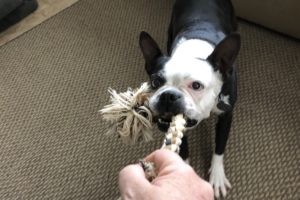Carter was in his new home only 4 days when my phone rang. The voice on the other end was silent at first, I could only hear deep breathing as she choked back tears. Finally, she said, “I have to give Carter back” letting me know she’s returning my foster dog.
My sweet, funny, affectionate, and insecure foster dog was another adoption return statistic.
I was so sure this was the right home for Carter! What happened?
When I hear an adopter is returning my foster dog, it messes with my head and heart for a little bit.
It’s hard for the adopter, it’s hard for me, it’s hard for the rescue, and it’s hard for the dog.
That doesn’t mean it shouldn’t happen.

What happened? Why was she returning her adopted dog?
One of the reasons adoption returns are so hard for me is that we really do work hard to find the right match for each dog in rescue. Decisions can take weeks and involve lots of paperwork and many phone calls. Carter also had a 2-hour meet/greet that was part of the approval process. Hours and hours had gone into vetting this person for Carter.
She was and still is wonderful and I’d give her dog again. Just a different one.
So, what happened?
Carter had a “come apart” at the vet earlier that day during a meet and greet visit.
He lunged and barked at the vet tech.
Slow to meet new strangers, at times uncomfortable with hellos, and with a history of snarly behavior during vet interventions, I’d suggested to his adopter that Carter’s first vet visits be social visits only.
What I didn’t suggest was arranging the first visit this soon after adoption.
His aggressive behavior scared her and she felt like he was more dog than she was equipped to handle.
The adopter decides what’s workable.
While I knew this adoption was salvageable, the adopter was steadfast in her decision to return her adopted dog. She stated she felt in-over-her-head and ill-equipped to manage Carter’s social needs. She felt he was more at risk than I did.
Carter can air-snap (loudly!) when he is nervous in social situations. Air-snaps are technically bites, and she was unwilling to assume risk, liability, and legal consequence. While I viewed the risk to be very low, she did not. I understand and respect her position.
(To read more about bite levels and bite severity, read Ian Dunbar’s Dog Bite Scale. )
Returning an adopted dog.
Returning an adopted dog isn’t a decision without consequence: she felt horrible about her decision, Carter was confused and aloof, and I too felt like I’d failed my little buddy. We all – Carter included – thought this was the right match.
I was as encouraging as I could be with the adopter. She didn’t want to forgive herself for giving up on him even though she knew it was right to return her adopted dog and bring him back to me. It took her a long time to gain the courage to adopt again.
It took Carter several weeks to re-adjust to my home. It was hard to watch, but I knew he’d recover. I just had to be patient with the process.
I spent weeks asking myself, “what did I miss?” over and over and over. I assumed blame as well.
Truth is, there was no blame anywhere. The adopter was brave and responsible to say – this isn’t the dog for me.
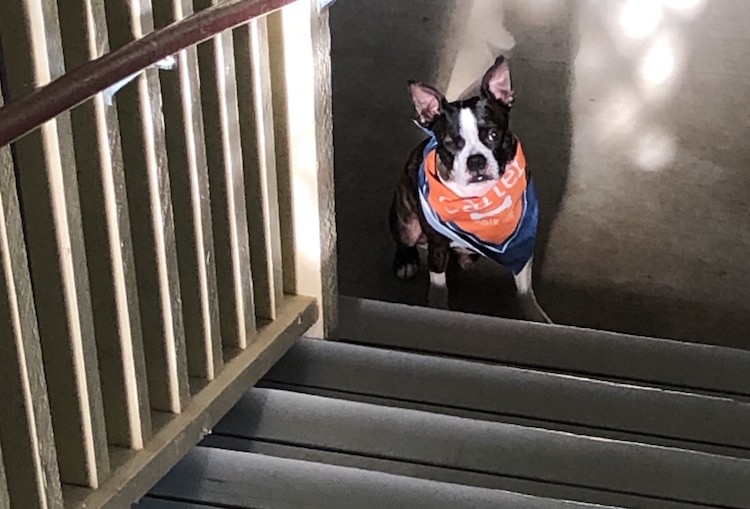
Retention and Recitivism and Returning An Adopted Dog: How Prevalent is it?
The AHA’s 2013 study on adoption retention confirms that returning adopted dogs is common and the numbers were surprising to me: more than 1 in 10 shelter pets were no longer in the home 6 months after adoption.
Let me emphasize, these are adoptions from shelters, NOT foster-based rescue organizations.
This number may be low as the study reports their survey return percentages were 60% at best, and one city only had a 33% response rate. According to Survey Gizmo, that response rate was better than normal, but it doesn’t ease my mind or stop me from wondering, “What about the other 67%? What happened to all of those animals?
Does Your Rescue Agency Keep Stats on Returned Foster Dogs?
I tried to get our rescue to take on this project for a year, and the best I could accomplish was to calculate the percentage of dogs that were returned to us. We didn’t have a formal follow-up process, so if a family rehomed their adopted dog without telling us, we never knew about it.
We simply hoped that everyone who’d adopted from us honored our non-transferable adoption contract clause that stated our dogs were to be returned to the agency.
I actually did some calculations for three years on returning foster dogs and our lowest recidivism percentage was 3% and the highest percentage was 7%. I was darn proud of that 3%!!
I just don’t really know what we did to get that 3%. Maybe it was just a good year?
American Humane Association’s Adoption Return Study
In the AHA’s study, they found that the reasons pets (cats and dogs) were returned to the shelter after adoption was for the following reasons:
- unexpected costs
- human health issues
- destructive behavior including house-training issues
- disobedience
- barking
- overly active
- aggressive behavior
Returned Adopted Dogs Are Inevitable
I felt sad for Carter, he’s been in rescue for nearly 20 months. The volunteers who screen our applicants usually do so carefully and spend a lot of time talking with potential adopters on the phone. Carter even had two meet and greets before we finalized his adoption. He fell in love with her instantly. I was sure. She was sure, too I think.
What happened? What went wrong?
Does anything have to go wrong? Is it always someone’s mistake when an adopted dog gets returned?
I don’t think so. If you are confident in your adoption screening processes and you work to facilitate best match dog to family (and family to dog) adoption returns should be low in number and facilitated by influences outside what your screening processes can capture.
I’ll say it again: The adopter gets to decide if this is the right dog for them. The adopter gets to decide if and when they return an adopted dog.
I want anyone returning my foster dog to find the process barrier-free and to feel respected and validated.
My Foster Dog Is Returned – Moving Forward
Now that Carter is back with me, what’s next? What will I do differently? What does my foster dog need?
I’ll Re-write His Adoption Bio
In Carter’s case, I think his Petfinder biography may have played a role, oddly enough. He had a sensational rescue story that made you want to scoop him up, hold him close, and tell him everything was going to be OK.
Those that wanted to help the underdog or take a neglected dog and spoil him rotten applied.
Those that were already skilled in caring for a dog with confidence issues seemed to stay away. I looked for applicants that were prior pet owners or required to work with a trainer.
I believe one trainer actually talked an applicant out of adoption. I wish that trainer had talked to me first. Carter has minor social issues that are easily managed with some simple techniques. I must have not made that clear enough in my writings.
Writing biographies for adoption is hard. Balancing full transparency and “heart-tugging” write-ups is hard.
I Want To Understand The Event
I asked Carter’s adopter to please send me an email with the details of the event at the vet’s office. I wanted a play-by-play of her experience so that I could understand what happened and hopefully understand the point where Carter flew over threshold. He’d never done this with me during the 4-5 trips to the vet while I fostered him.
(If you haven’t heard the term “threshold”, check out this article, “What is a threshold?”)
I also contacted the veterinarian clinic where Carter had his come-apart to get their recall. I don’t always get that luxury – some veterinarian clinics have pretty strict privacy policies regarding disclosure of information, but I explained that I wanted to be responsible with this knowledge about this dog before I just rehomed him somewhere else. They appreciated my position.
Vets deal with a lot of behavioral issues. They don’t like being snapped at (or worse) either!
This clinic was extremely helpful. To them, Carter was reactive but certainly wasn’t a dog that couldn’t be managed or cared for. They’d seen worse! Hearing that made me feel much better – I couldn’t imagine Carter behaving in such a way that he’d be denied veterinary care.
I’m left with a less than crystal clear picture of the events, but I don’t have to know all the details in order to regroup, help Carter develop a few more skills, and further define what skills his new family must have in order for Carter’s next adoption to stick.
What Also Happened That Shouldn’t Have
The applicant received more phone calls from the rescue agency than were necessary. I’m not sure why. Those calls did nothing to improve the plans for Carter. No additional information was gathered that I hadn’t already learned. What was accomplished? Nothing but more bad feelings.
Any rescue organization should have a plan for investigating adoption returns. I consider adoption returns to be a sentinel event – an event important enough for a rescue’s board of directors to stop, gather information, understand what happened and why it happened and determine if there is any adjustment that is needed in current process/protocols. As I explain in my blog post on using sentinel events in animal rescue, these review sessions are not intended to place blame on anyone or even on the dog, but simply an opportunity to stop and say, “Is there a way we can make a change that will result in a better process and better outcome?”
Returning my foster dog to his former routine.
“Set your dog up for success” good trainers will tell you.
Carter needed a series of successes following his return and the best way to do that was to return him to the exact environment from where he came.
I returned Carter to the exact schedule and exact routine and returned him to the exact set of house expectations. We began practicing his skills already learned. I’ll ask him to do new stuff after he is settled in.
Keep Communication Open With The Adopter
- Support the decision to return an adopted dog. I try to never guilt a responsible person for making a responsible decision to returning a dog. They experience enough guilt as it is.
Once, I did say some pointed words to a family where the wife kept putting the dog in a situation where he was going to bite a child. If she didn’t want the dog, I completely supported the decision. But she kept putting him directly in harm’s way.
Had he bitten a child, he would have probably been euthanized. I eventually went after the dog and brought him to safety.
Carter’s adopter was brave in her decision making. She didn’t belabor the inevitable and Carter did not experience any lasting consequence because of her swift decision. Carter’s well-being mattered more to her than her guilty feelings. - Help The Adopter Make Future Choices.
This particular adopter needs a dog. There’s a dog out there that needs her. I hope she makes a decision to get a dog sooner rather than later.
Some adopters who return dogs to me get different, personalized advice. I’ve encouraged people to select a different breed of dog, a different age of dog, or I’ve told people they need a cat or fish.
Help people make future choices with love in your heart. They may or may not respond kindly, but you planted a seed. - Make myself available as a resource.
If I made myself available as a resource for her and Carter’s journey, why would I retract that availability because she returned my foster dog?
She may not reach out to me at all, but I want her to feel she can.
During the application approval phases of adoption, a relationship formed between you and that person. Unless there is a specific reason why you need to cease communications with a person who has returned your dog, be available. I still receive emails from individuals years later asking me to weigh in on a question or concern. - Check my own feelings at the door.
I worked hard helping Carter get ready for adoption. I spent hours of free time with this applicant. The adoptions team also spent time with this applicant before I was to talk with her.
I looked forward to having one less foster dog in my home for a moment.
Carter came back mopey and confused. It was hard to watch.
I could take all of that emotion and be really rude, maybe upload some passive-aggressive posts on social media. Rant about no one understanding all the hard work we do. blah. blah. blah.
It is inconvenient when someone returns my foster dog. It’s inconvenient for everyone involved. But it’s part of the biz.
Kindness makes me feel better.
That said, I’m really disappointed and sad for Carter. I’m sad for my dogs. I’m sad for me. I’m sad for the former adopter.
It’s part of rescue work sometimes, and my feelings are my own. In this case, I guarantee Carter’s former adopter has her own feelings to grapple with. She doesn’t need me to pile it on. Rather, she needs my support.
Determine Which Skills Need Focus So Carter’s Next Adoption Sticks!
After a week, we will re-visit the issues that fueled his come-apart and determine the best next steps. My hunch is that I’m missing some very subtle cues in Carter’s body language, and there may be times he’s stressed and not overtly acting stressed until he’s over threshold.
Read about my visit with Carter and our trainer and the super-easy skill she taught us! GAME CHANGER!
Determine Which Criteria are of Utmost Importance for Carter’s Next Adopter
Carter had a perfect home. All to himself. He had a perfect yard. He had a resourced adopter and his needs and comforts would have been met every time. Yet, we missed the match. It happens.
Sometimes we spend too much time discussing fences and doggie doors and water hazards and crates and leashes and toys.
I plan to spend more time asking about expectations and plans and lifestyle and experience.
We need to spend time understanding both dog and adopter for the goal of forming a meaningful, manageable, lifelong relationship.
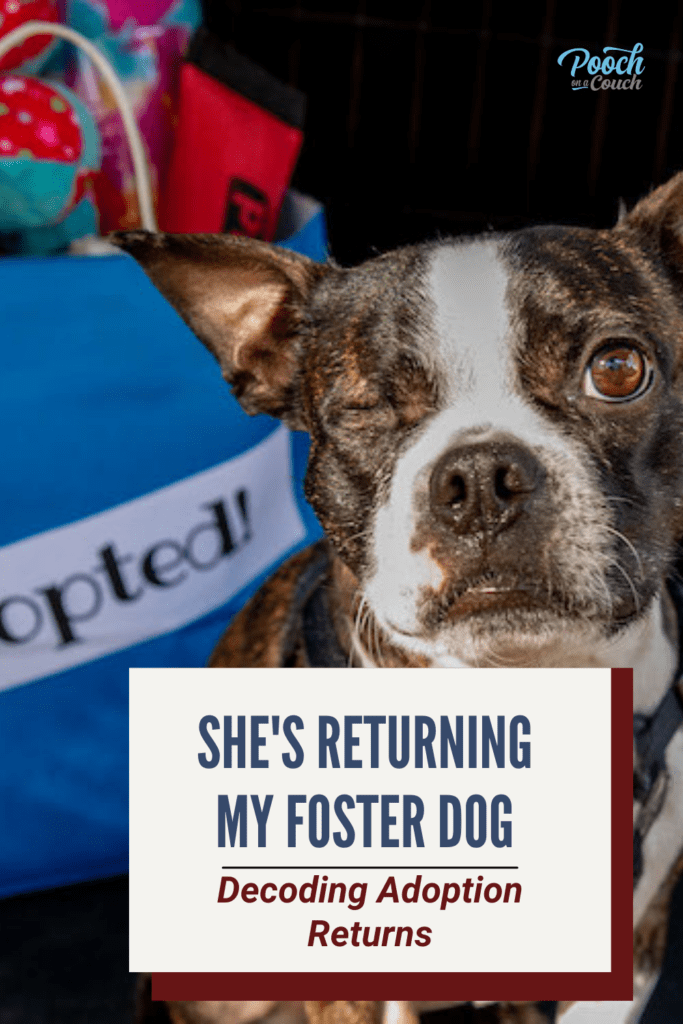
Your Turn: How Do You Handle It When People Are Returning Your Foster Dogs?
Have you had your foster dog returned to rescue? What happened? How did your rescue org manage it? How did you handle it? Do you have tips for managing an adoption return? Drop us a line!
Popular Posts
- HOW TO CHOOSE A DOG RESCUE AGENCY
- ULTIMATE GUIDE TO FOSTERING: 10 SKILLS YOU NEED
- VOLUNTEER IF YOU CANNOT FOSTER

